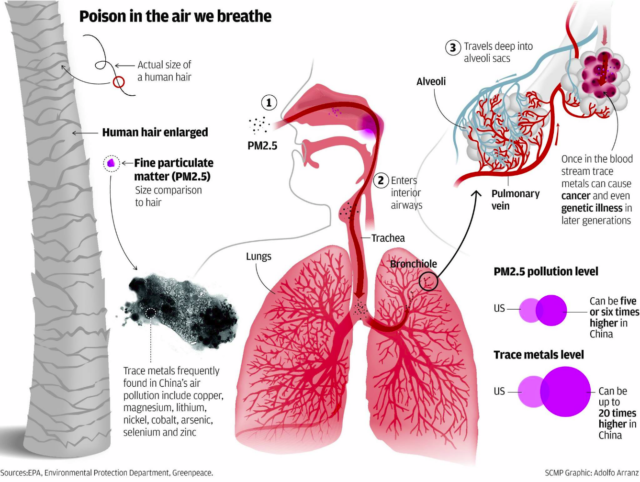PREVIOUS
State of Global Air 2017
April 3 , 2019
2459 days
1246
0
- Exposure to outdoor and indoor air pollution contributed to over 1.2 million deaths in India in 2017 according to the report ‘State of Global Air’.
- This report is released by Health Effects Institute, an independent, non-profit US based research institute.
- The study reports that the life on average of a South Asian child growing up in current high levels of air pollution will be shortened by 2 years and six months.
- A majority of Air pollution deaths are directly attributed to PM2.5, half of which are generated from India and China together.
- Fossil fuel generated emissions are responsible for about 65 per cent of premature deaths from human-made air pollutants worldwide.
- India has initiated major steps to address air pollution and pollution sources like
- The Pradhan Mantri Ujjwala Yojana
- Accelerated Bharat Stage VI clean vehicle standards
- National Clean Air Programme.
- PM2.5 refers to atmospheric particulate matter (PM) that have a diameter of less than 2.5 micrometres.
- These particles can be detected only with an Electron Microscope.
- This increases the chances of humans and animals inhaling them into the bodies.
- Fine particles are known to trigger or worsen chronic disease such as asthma, heart attack, bronchitis and other respiratory problems.

Leave a Reply
Your Comment is awaiting moderation.


